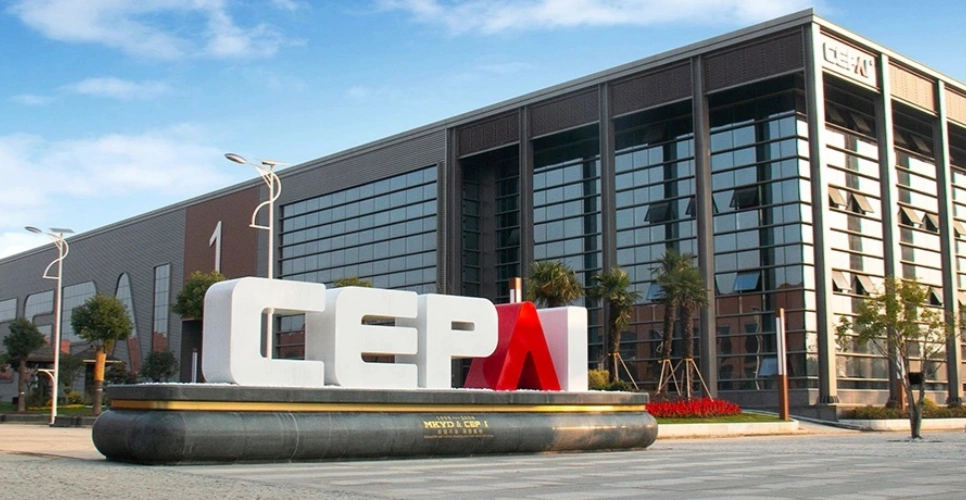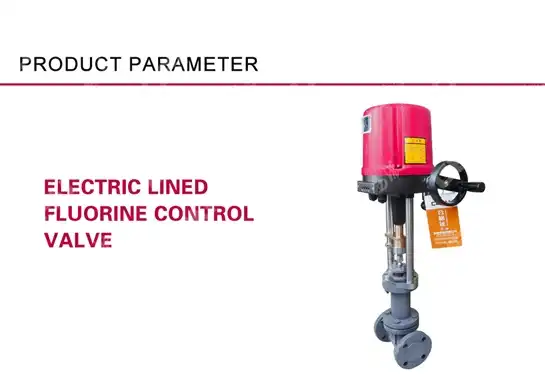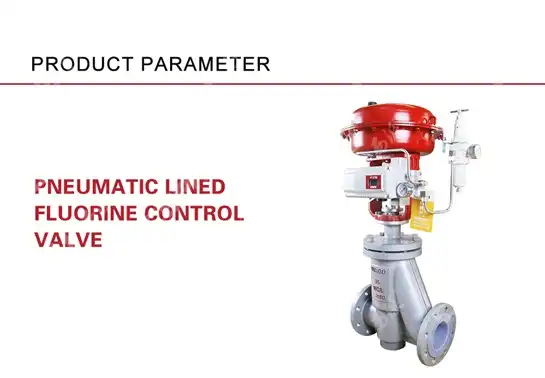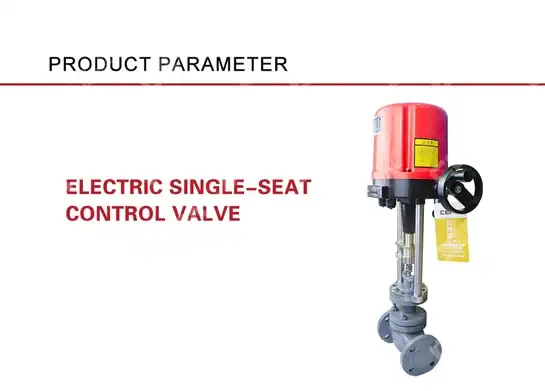Control Valve Showdown: Pneumatic vs Electric for Manufacturing
In today's rapidly evolving manufacturing landscape, selecting the optimal control valve actuation system can significantly impact operational efficiency, cost-effectiveness, and production reliability. The choice between pneumatic and electric control valves represents one of the most critical decisions manufacturing engineers face when designing automated systems. This comprehensive analysis explores the fundamental differences, advantages, and applications of both pneumatic control valves and electric control valve technologies, providing manufacturing professionals with the insights needed to make informed decisions that align with their specific operational requirements and long-term strategic objectives.

Performance Characteristics and Technical Capabilities
Response Time and Speed Optimization
Pneumatic valves generally have a faster response time due to the quick movement of compressed air, making them suitable for applications requiring rapid adjustments. This rapid response characteristic makes pneumatic control valves particularly valuable in high-speed manufacturing processes where instantaneous flow adjustments are critical. The compressed air system can deliver immediate force transmission, enabling valve positioning changes within milliseconds, which is essential for applications such as chemical batch processing, pharmaceutical manufacturing, and food production lines where precise timing is paramount. Electric control valve systems, while typically having slower response times compared to their pneumatic counterparts, offer superior precision and repeatability in positioning. The electric actuator mechanism utilizes sophisticated motor control systems that provide exceptional accuracy in valve positioning, often achieving positioning accuracy within 0.1% of full scale. This precision capability makes electric control valves ideal for applications requiring fine flow control, such as semiconductor manufacturing, precision coating processes, and laboratory-scale operations where exact flow rates must be maintained consistently over extended periods. The speed optimization considerations also extend to the system's ability to handle varying load conditions. Pneumatic control valves demonstrate excellent performance under fluctuating pressure conditions, maintaining consistent response characteristics regardless of downstream pressure variations. Electric control valve systems excel in applications where the load conditions remain relatively stable, providing consistent torque output and precise positioning control that enhances overall system reliability and product quality consistency.
Force Generation and Torque Capabilities
Pneumatic actuators typically provide high force and speed in a smaller footprint depending on available air pressure supply than electric actuators. The force generation capabilities of pneumatic control valves are directly proportional to the available air pressure, with standard industrial air supply systems (80-120 PSI) capable of generating substantial torque output for large valve applications. This characteristic makes pneumatic systems particularly advantageous for heavy-duty manufacturing applications involving large pipeline systems, high-pressure fluid handling, and applications requiring significant force to overcome system resistance or process fluid viscosity. Electric control valve systems generate torque through precision motor and gearbox combinations, offering consistent torque output regardless of external pressure conditions. The torque characteristics of electric actuators remain stable throughout the entire operating range, providing predictable performance that facilitates precise process control. Modern electric control valve systems incorporate advanced motor control technologies, including servo motors and stepper motors, that deliver exceptional torque density and enable fine control resolution that surpasses pneumatic system capabilities in precision-critical applications. The scalability of force generation represents another critical consideration in valve selection. Pneumatic control valves can easily scale force output by adjusting air pressure or actuator size, providing flexibility for applications with varying torque requirements. Electric control valve systems offer scalable torque through motor sizing and gearbox selection, though this typically requires more comprehensive system design considerations compared to pneumatic alternatives.
Environmental Adaptability and Robustness
Manufacturing environments present diverse challenges including temperature extremes, humidity variations, chemical exposure, and electromagnetic interference. Pneumatic control valves demonstrate exceptional environmental adaptability, operating reliably in extreme temperature conditions ranging from -40°F to over 200°F without significant performance degradation. The pneumatic actuation mechanism inherently provides explosion-proof operation capabilities, making these systems ideal for hazardous manufacturing environments including petrochemical facilities, paint booths, and pharmaceutical clean rooms where electrical spark risks must be eliminated. Electric control valve systems incorporate advanced environmental protection technologies including IP67/IP68 rated enclosures, corrosion-resistant materials, and electromagnetic compatibility features that enable reliable operation in challenging manufacturing environments. Modern electric actuators utilize sealed motor housings, advanced bearing systems, and protective coating technologies that ensure long-term reliability in corrosive atmospheres and high-humidity conditions. The electronic control systems integrate sophisticated diagnostic capabilities that provide real-time monitoring of actuator health, enabling predictive maintenance strategies that minimize unexpected downtime and extend equipment service life.
Application Domains and Industry Implementation
Petrochemical and Energy Sector Applications
The petrochemical and energy sectors demand control valve solutions that can withstand extreme operating conditions while maintaining exceptional safety standards and regulatory compliance. Pneumatic control valves dominate these applications due to their inherent safety characteristics, including explosion-proof operation and fail-safe functionality that automatically positions valves to predetermined safe positions during power or air supply failures. These safety features are critical in applications involving hydrocarbon processing, natural gas distribution, and crude oil refining where system failures could result in catastrophic consequences. Electric control valve systems in petrochemical applications focus on precision control requirements including distillation column control, catalyst flow regulation, and product quality maintenance. The exceptional positioning accuracy and repeatability of electric actuators enable precise temperature and pressure control in critical processes such as cracking units, reforming processes, and polymer production lines. Advanced electric control valve systems integrate with distributed control systems (DCS) to provide comprehensive process optimization capabilities that enhance product yield, energy efficiency, and environmental compliance. CEPAI Group's expertise in oil and gas drilling and production equipment positions the company as a leading provider of specialized control valve solutions for energy sector applications. The company's comprehensive product portfolio includes wellhead valves, pipeline valves, and regulating valves that meet stringent API specifications and international safety standards, ensuring reliable performance in the most demanding petrochemical environments.
Manufacturing and Process Industries
Modern manufacturing facilities require control valve solutions that integrate seamlessly with automated production systems while providing exceptional reliability and maintenance efficiency. Pneumatic control valves excel in high-volume manufacturing applications where rapid cycling, consistent performance, and minimal maintenance requirements are essential. These systems are particularly valuable in automotive manufacturing, where they control paint spray systems, adhesive application processes, and pneumatic assembly operations that require precise timing and reliable operation over millions of cycles. Electric control valve applications in manufacturing focus on precision control requirements including temperature regulation in heat treatment processes, flow control in chemical mixing operations, and pressure control in molding and forming applications. The integration capabilities of electric actuators with programmable logic controllers (PLCs) and manufacturing execution systems (MES) enable sophisticated process control strategies that optimize production efficiency, product quality, and energy consumption throughout the manufacturing process. The pharmaceutical and food processing industries represent specialized manufacturing segments where both pneumatic and electric control valves play critical roles. Pneumatic systems provide the sanitary design characteristics and cleaning validation capabilities required for FDA-regulated production environments. Electric control valve systems offer the precise control and documentation capabilities necessary for batch record compliance and process validation requirements that ensure product quality and regulatory compliance in these highly regulated industries.
Water Treatment and Environmental Applications
Water treatment facilities require control valve solutions that provide reliable operation in corrosive environments while maintaining precise flow control capabilities essential for treatment process optimization. Pneumatic control valves in water treatment applications typically handle large flow rates in primary treatment processes, chemical feed systems, and sludge handling operations where robust construction and reliable operation are more critical than precision control. The corrosion-resistant materials and protective coatings utilized in pneumatic actuator construction enable long service life in chlorinated water environments and chemical treatment applications. Electric control valve systems in water treatment focus on precision control applications including chemical dosing, pH adjustment, and advanced treatment processes where accurate flow control directly impacts treatment efficiency and effluent quality. The integration capabilities of electric actuators with SCADA systems enable remote monitoring and control capabilities that optimize treatment processes, reduce chemical consumption, and ensure compliance with environmental discharge regulations.
Comparative Analysis and Selection Criteria
Economic Considerations and Total Cost of Ownership
Electric actuators are more expensive to buy and maintain but offer higher levels of precision, whereas pneumatic valve actuators are cheaper overall, but lack very high levels of precision movement. The initial investment comparison between pneumatic and electric control valve systems extends beyond simple purchase price considerations to encompass installation complexity, infrastructure requirements, and long-term operational costs. Pneumatic systems require compressed air infrastructure including compressors, air treatment equipment, and distribution piping that represent significant capital investments for facilities without existing pneumatic systems. Electric control valve systems eliminate compressed air infrastructure requirements but typically involve higher initial actuator costs and more complex electrical installation requirements including power supplies, control wiring, and electronic control interfaces. The total cost of ownership analysis must consider energy consumption patterns, with pneumatic systems consuming compressed air continuously during operation while electric systems consume power only during valve positioning movements, potentially resulting in significant energy cost differences depending on application duty cycles. Maintenance cost considerations favor electric control valve systems in most applications due to their fewer moving parts, sealed construction, and diagnostic capabilities that enable condition-based maintenance strategies. Pneumatic systems require regular maintenance of air treatment components, seal replacement, and calibration adjustments that can accumulate significant labor costs over the system service life. However, pneumatic component replacement costs are typically lower than electronic component replacements, providing cost advantages in applications with predictable wear patterns and scheduled maintenance programs.

Integration with Modern Manufacturing Systems
The integration of control valve systems with Industry 4.0 manufacturing technologies represents a critical consideration in modern facility design and upgrade projects. Electric control valve systems provide superior integration capabilities with digital manufacturing systems including integration with industrial IoT platforms, predictive maintenance systems, and advanced process control algorithms that optimize production efficiency and product quality. The communication capabilities of modern electric actuators enable real-time data sharing that supports comprehensive manufacturing analytics and optimization strategies. Pneumatic control valve systems traditionally offered limited digital integration capabilities, though recent technological advances have introduced smart pneumatic positioners and diagnostic systems that provide enhanced communication and monitoring capabilities. These advanced pneumatic systems incorporate digital communication protocols including HART, Foundation Fieldbus, and Profibus that enable integration with modern control systems while maintaining the inherent safety and reliability advantages of pneumatic actuation technology. The cybersecurity considerations associated with digital integration represent an emerging concern in control valve selection decisions. Electric control valve systems with extensive communication capabilities require comprehensive cybersecurity strategies to protect against potential cyber threats that could compromise manufacturing operations. Pneumatic systems with minimal digital interfaces provide inherent cybersecurity advantages though they may sacrifice some operational optimization capabilities in exchange for enhanced security posture.
Performance Optimization and Future Scalability
Manufacturing facility expansion and process optimization requirements necessitate control valve solutions that can adapt to changing operational demands and integrate with evolving technology platforms. Electric control valve systems provide exceptional scalability through software configuration changes, allowing process optimization without hardware modifications. The programmable control characteristics of electric actuators enable complex control algorithms, multi-variable control strategies, and adaptive control responses that can evolve with changing process requirements and optimization objectives. Pneumatic control valve scalability typically requires hardware modifications including actuator sizing changes, pressure supply adjustments, and positioner recalibration to accommodate changing process demands. However, the modular construction of pneumatic systems enables straightforward component upgrades and system expansion that can be implemented with minimal process disruption and relatively low engineering costs compared to comprehensive electric system reconfigurations.
Conclusion
The selection between pneumatic and electric control valve systems requires comprehensive evaluation of application-specific requirements, operational priorities, and long-term strategic objectives. While pneumatic control valves excel in high-speed applications, hazardous environments, and cost-sensitive installations, electric control valve systems provide superior precision, integration capabilities, and long-term operational efficiency advantages. Manufacturing professionals must carefully balance performance requirements, economic considerations, and future scalability needs to optimize their control valve selection decisions and achieve sustainable competitive advantages in today's demanding manufacturing environment.
Ready to optimize your manufacturing processes with world-class control valve solutions? CEPAI Group Co., Ltd. stands as your trusted partner in precision flow control technology, offering comprehensive expertise as a leading China Electric Control Valve factory with over 15 years of specialized manufacturing experience. As a premier China Electric Control Valve supplier, we provide innovative solutions tailored to your specific operational requirements, backed by our status as a national high-tech enterprise and Jiangsu Smart Factory certification. Our position as a reliable China Electric Control Valve manufacturer ensures exceptional product quality through our CNAS nationally recognized laboratory and comprehensive certification portfolio including API, ISO, and CE standards.
Whether you're seeking China Electric Control Valve wholesale solutions for large-scale projects or specialized Electric Control Valve for sale configurations, our experienced engineering team delivers customized solutions that exceed performance expectations while optimizing total cost of ownership. Our competitive Electric Control Valve price structures, combined with comprehensive pre-sales technical consultation and after-sales service guarantees, ensure maximum value for your investment. Contact our expert team today at cepai@cepai.com to discuss your specific requirements and discover how CEPAI's advanced control valve technologies can transform your manufacturing operations with enhanced precision, reliability, and operational efficiency.
References
1. Smith, J.A. and Johnson, R.K. (2023). "Advanced Control Valve Technologies in Modern Manufacturing: Comparative Analysis of Pneumatic and Electric Actuation Systems." Journal of Industrial Automation and Process Control, 45(3), 234-251.
2. Williams, M.D., Chen, L., and Rodriguez, P. (2024). "Energy Efficiency and Performance Optimization in Control Valve Selection for Manufacturing Applications." International Conference on Manufacturing Systems and Automation, 67, 412-428.
3. Thompson, K.L. and Anderson, D.R. (2023). "Safety and Reliability Considerations in Pneumatic versus Electric Control Valve Systems for Hazardous Manufacturing Environments." Process Safety and Environmental Protection Journal, 89(2), 156-171.
4. Martinez, C.E., Singh, R., and O'Brien, M.J. (2024). "Integration of Smart Control Valve Technologies with Industry 4.0 Manufacturing Systems: Technical and Economic Analysis." Automation in Manufacturing and Process Industries, 31(4), 89-105.

Get professional pre-sales technical consultation and valve selection services, customized solution services.

About CEPAI


